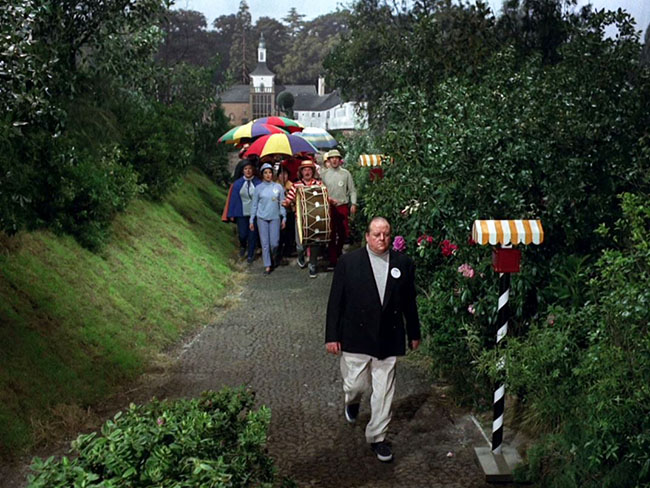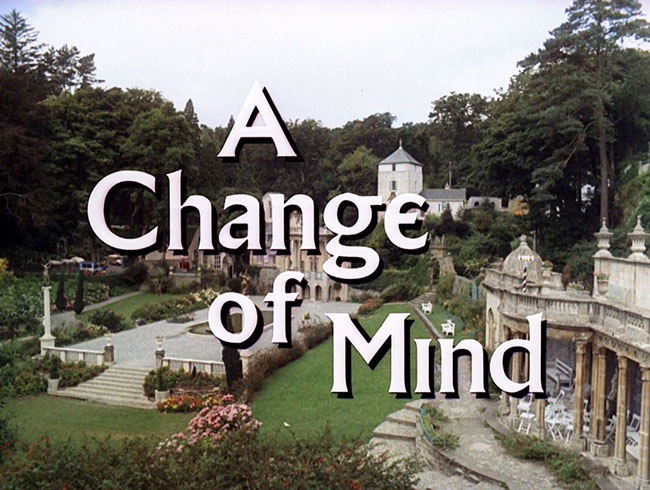A CHANGE OF MIND First UK Broadcast: December 15, 1967 [episode #12 in transmission order] | Written by Roger Parkes | Directed by Joseph Serf (Patrick McGoohan)
SYNOPSIS
Pressure increases dramatically for No.6 to conform. While conducting his usual workout regimen in the forest, he’s accosted by Village thugs who demand, “Why aren’t you using the Village gymnasium?” His answer that he wants privacy results in a fight. The “Committee” is labeling some Villagers as “Unmutuals” and sentencing them to harsh treatments up to and including Instant Social Conversion: a lobotomy. No.6 witnesses Villagers forced to confess their sins before their friends and neighbors at a podium; they’re actually just parroting the words coming out of a speaker. One man undergoing “Aversion Therapy” is locked in a chair and forced to watch images of Rover bouncing toward him, the smiling face of No.2 (John Sharp, The Wicker Man), and the flashing word UNMUTUAL; the man is going insane. No.6’s refusal to cooperate brands him Unmutual by the Committee, and Villagers begin to avoid him. After the Appeals Subcommittee washes their hands of him, he’s lynched and forced to undergo Instant Social Conversion under the supervision of No.86 (Angela Browne). Laser surgery (or a 1967 form of it) is performed on his frontal lobe in hopes of removing his aggression and making him more cooperative, and afterward he’s returned home with a band-aid on his temple. But while No.86 makes him tea, he notices her slipping something in his drink and begins to suspect a trick. He dumps the tea while she’s not looking. No.2 visits and tries to coax No.6 into confessing why he resigned, but No.6 becomes violent and sends him away. No.2 is concerned that his aggression hasn’t been completely removed. When No.86 tries to serve No.6 another drugged tea, he switches the cups. She drinks the tea intended for No.6 and becomes easily susceptible, and so he hypnotizes her and learns that she faked his lobotomy on orders of No.6. He gives her orders of his own. To No.2 he suggests that he give a speech before the Village praising its methods, hinting that he might reveal why he resigned. But during the speech, No.86 is hypnotically triggered to call out No.2 as Unmutual. No.6 helps rile up the crowd, and a mob chases No.2 away.
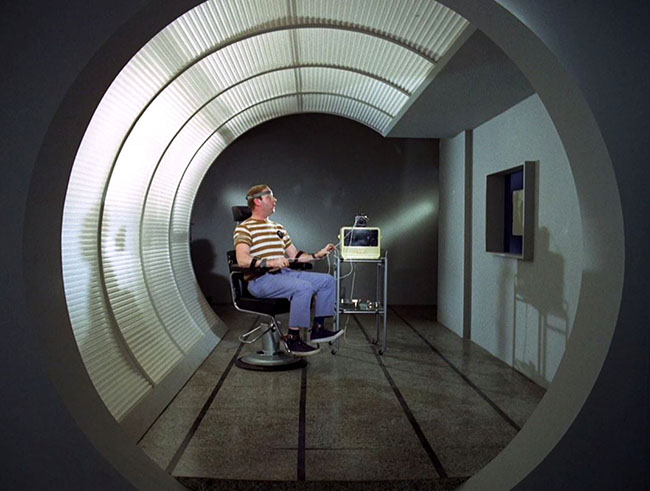
A prisoner undergoes Aversion Therapy.
OBSERVATIONS
“A Change of Mind” has a middling reputation among many fans, but for me it’s a welcome re-establishing of the show’s core premise in light of other late-season digressions. “It’s Your Funeral,” for example, does not have much to do with the struggle of the individual vs. society, a topic which ironically the Western episode, “Living in Harmony,” covers in depth. This episode is also very dark, with its clinical discussions of lobotomy and the sight of No.6 strapped to an operating table, about to have his aggression and individuality surgically removed from him (or so we think). The Villagers angrily confront and even attack No.6, stampeding him into his “Social Conversion.” As others have pointed out, there is a touch of McCarthyism in the fanatical desire to punish the outsider No.6. Patrick McGoohan’s direction, under a pseudonym, punches up the rather basic story into the bizarre and nightmarish vision of the Village that he gave us in his episode “Free for All.” Even when No.6 walks into the Green Dome for a visit with No.2, a harsh spotlight falls on him and tracks him as he walks back and forth, a subtle but brilliant stylistic choice. The Prisoner is at its strongest when it’s the pop art equivalent of Orwell and Kafka, and “A Change of Mind” helps get the show back on track. It also sets the stage for a larger confrontation between No.6 and the Village authorities. That would be “Once Upon a Time,” an episode which McGoohan had already filmed (it was the sixth to go into production), and which was originally conceived as the end of just the first series. When The Prisoner was renegotiated to a 17-episode run instead of 26, OUAT would become part of a two-part climax to the entire endeavor. So look at “A Change of Mind” as the beginning of the end. You certainly get that feeling with the use of the Butler here. He and No.6 share a few scenes alone together, silently regarding one another, and at episode’s end they are the last two standing. The Butler silently picks up his umbrella and walks away. Soon these two will face the end of the Village together.
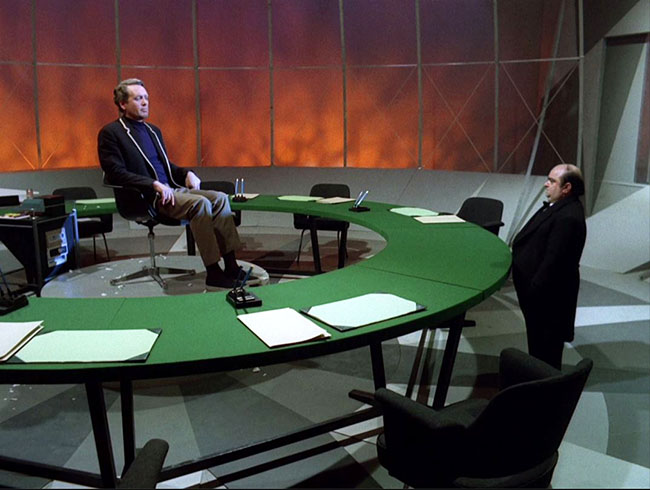
In the Council Chamber: No.6 and the Butler (Angelo Muscat).
The original director was to be Roy Rossotti, who was a second unit director on Doctor Zhivago and assistant art director for Lawrence of Arabia. First AD John O’Connor recalled, “I just remember Patrick…coming up to me and saying, ‘Oh, the director’s not very well, he won’t be back after lunch. Can you arrange a car for him to go back to London?’…and going to see Roy Rossotti and saying, ‘Oh, Patrick’s asked me to [get] a car for you.’ I do remember seeing a somewhat distraught young man who then did take the car and go back, or rather leave the studio, and Patrick take over directing… Obviously he was dissatisfied with what he was producing and decided to get rid of him.”A downside to “A Change of Mind” is that it was filmed not in Portmeirion but in the MGM studio’s recreation, with its blown-up photos and paintings of Portmeirion standing behind the actors. This is the episode in which this technique is most distracting, in particular when No.6 is seated outside the Village café. The shadows cast by him and the other actors betray the illusion immediately (the high-definition Blu-Ray doesn’t help). On the other hand, a few pick-up shots in Portmeirion using stand-ins provide some interest, including one conspicuous flub in which you can see a car (not a Village mini-moke) driving by in the background. This was Roger Parkes’ only script for The Prisoner. He would go on to write for ITC’s Man in a Suitcase and many other shows, including Blake’s 7. To his credit, he plugs into The Prisoner‘s obsession with sadistic psychological techniques, including “Aversion Therapy,” and, of course, the last resort of lobotomy. But he also illustrates how members of a society can buy into the propaganda of a regime and punish their peers. “A Change of Mind” has echoes not just of McCarthyism and witch hunts but also fascism – inevitable, perhaps, given the many Mengele-like personalities we’ve been introduced to in the Village and its “Hospital.” No.86, who speaks carefully to the TV monitors while lobotomizing No.6, is just the latest example. (Opinions vary: her stilted delivery during this scene is either a poor acting choice or a brilliant parody of banal science documentaries.)
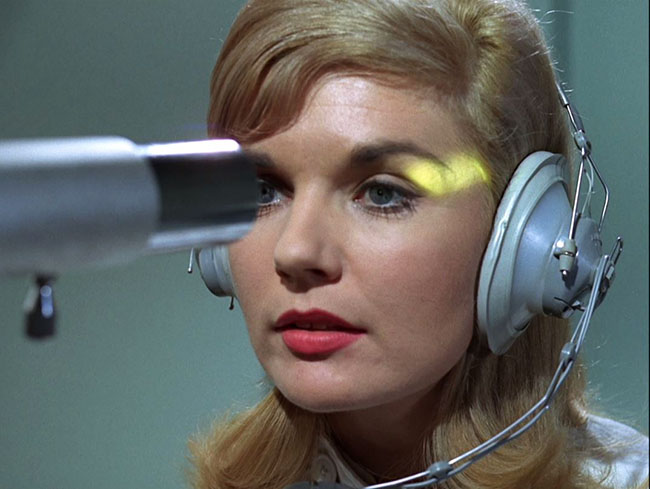
Angela Browne as No.86.
SEQUENCE
“A Change of Mind” works best late in the season because we see the Village dealing with No.6 in more extreme ways, and No.6 not only retaliating but actually running No.2 out of town. As I mentioned, I see this as being a pivotal story for the series, moving No.6 a significant step closer to the finale. The next episode in my sequence, “Hammer Into Anvil,” makes further strides. No.6 is beginning to dismantle the Village from within, which will push the Village to a crisis point.
METHODOLOGY
The threat of lobotomy is a subterfuge; No.2 is not actually in danger of damaging No.6 (we know this is a point of concern for all No.2’s…No.6 seems to be their most important prisoner). It’s an interesting tactic, almost a short cut: he hopes to convince No.6 that he’s already been broken before he’s broken him, and so learn why he resigned that way.
THE VILLAGE
The Committee and the Council Chamber are almost identical to the Council in “Free for All,” replete with the Illuminati-style pyramid (No.1’s unblinking eye, perhaps). But these appear to be in different places; in the former episode, we are in the Town Hall, but this seems to be a unique location and has its own sign. Someone can correct me in the comments if I’m misreading this.
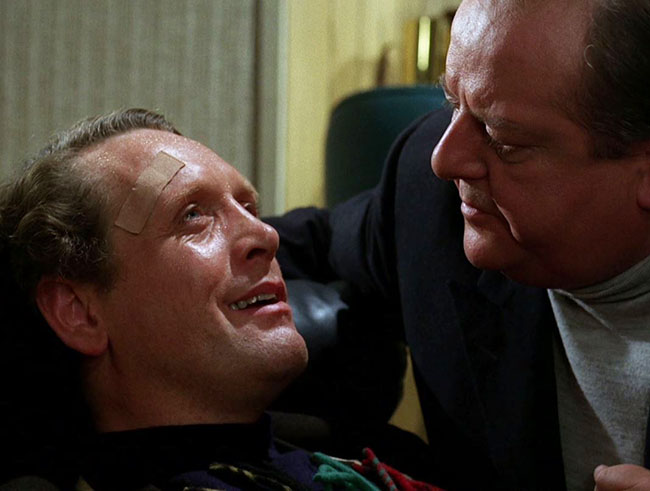
No.2 (John Sharp) asks No.6 why he resigned.
ROVER
Rover only makes a cameo in this episode, on a video monitor. We miss you, Rover. It’s been a while. Please come back to the show soon.
PROPAGANDA
Posters appear everywhere with the face of No.2, pointing his finger like Uncle Sam with the words, “Your Community Needs You!”
The branding of individuals as “Unmutual” appears to be separate from No.2’s plot and just part of the Village becoming more extreme in its social-pressure tactics. This is the first and last time in the series that this term will be used. It has since been appropriated for the Prisoner news website, The Unmutual.
FISTICUFFS
Typically a big fight scene happens about two-thirds of the way through an episode as a concession in light of The Prisoner’s nonstop cerebral gamesmanship. Here, unusually, it happens right at the beginning. The fact that No.6 is assaulted before he’s done anything wrong highlights the show’s Kafkaesque underpinning…while still squeezing in the requisite action for the network suits.
WIN OR LOSE?
After a rough start, this becomes a major win for No.6, with No.2 departing ignominiously, the Village finally turned against him.
QUOTES
Committee Voice: We deplore your spirit of disharmony.
No.6: That’s a common complaint around here, isn’t it?No.2: There is a saying. “The slowest mule is nearest to the whip.”
No.6: And another, “He who digs a pit will one day lie in it.”No.6 (in his speech to the Village): I was a rebel. An Unmutual. Senselessly resisting this our fine community. To borrow one of No.2’s sayings, ‘The butcher with the sharpest knife has the warmest heart.’
UP NEXT: HAMMER INTO ANVIL
